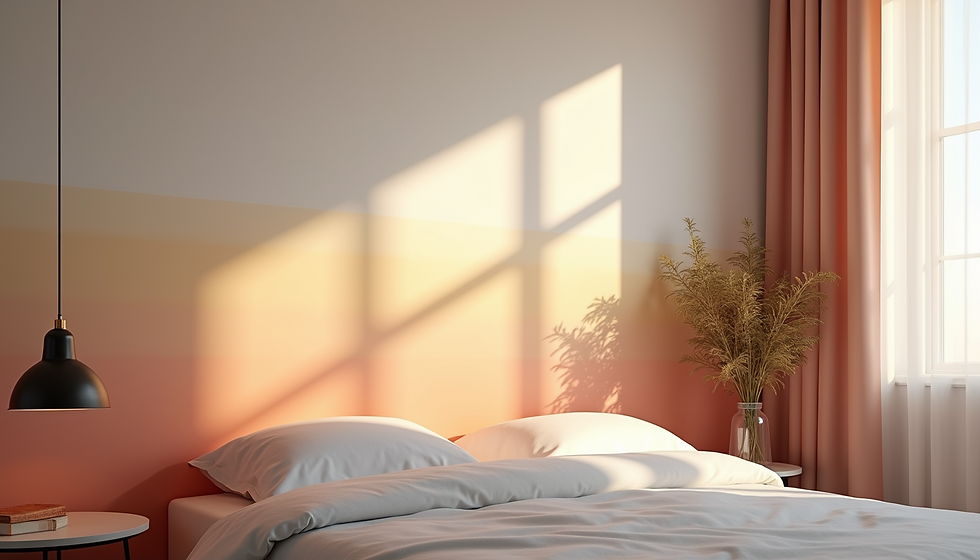Effective Strategies for Repairing Popcorn Texture Ceilings and Finding Your Best Solution
- Exceptional Drywall Contractor
- Aug 24
- 3 min read
Popcorn texture ceilings, once a common feature in homes, can become unattractive over time. The wear and tear, water damage, and changing design preferences often leave homeowners seeking ways to improve their ceilings. Repairing these ceilings may seem overwhelming, but various effective methods exist. Understanding your options is essential. In this post, we’ll break down effective strategies for repairing popcorn texture ceilings, reinforcing that there is no one-size-fits-all solution. Contact us to discover the best solution tailored for you.
Understanding Popcorn Texture Ceilings
Popcorn texture ceilings, also called acoustic ceilings, were popular from the 1950s to the 1980s. Homeowners appreciated their ability to hide imperfections and reduce noise. The texture is created by mixing a compound with water and spraying it onto the ceiling. However, as time passed and design preferences shifted, many homeowners sought ways to remove or repair these ceilings.
Over the years, this texture can crack, discolor, or become damaged. For example, ceilings exposed to leaks may show water stains, while those in high-traffic areas may suffer from damage due to bumps and scrapes.
Assessing the Damage
Before initiating repairs, assessing the extent of the damage is crucial. Look for:
Cracks: Small hairline cracks can indicate minor issues, while larger cracks may require more attention.
Stains: Water stains can signal leaks that need fixing.
Peeling: Discolored or peeling areas may suggest that the texture has reached the end of its life.
If you find minor issues, a quick patch may be enough. However, significant damage may require removal or retexturing.
Repairing Minor Damage
For small damages, simple repairs can often restore the ceiling's appearance. Follow these steps:
Clean the Area: Use a damp cloth to remove dust and debris.
Apply a Patch Compound: Use a popcorn ceiling patch compound to fill in cracks. A product like Homax Popcorn Ceiling Patch is designed for this purpose and can easily mesh with the existing texture.
Blend the Texture: After the compound dries, use a texture spray that matches the surrounding area. This helps ensure the repair is nearly invisible.
Paint: Finally, apply a coat of paint that matches the ceiling color, restoring uniformity.
This method effectively addresses minor issues, maintaining the ceiling's appearance without needing a full renovation.
Removing Popcorn Texture
In cases of extensive damage or if you wish to modernize your ceiling, removal might be the best choice. Here’s how to proceed:
Prepare the Room: Clear out furniture and cover surfaces with drop cloths to catch debris.
Test for Asbestos: Homes built before the 1980s may contain asbestos. Consider hiring a professional if this is a concern—as far as 10-12% of homes from this era had asbestos in their popcorn ceilings.
Wet the Texture: Lightly spray the texture with water to dampen it, making it easier to scrape off.
Scrape the Texture: Use a wide putty knife to gently remove the popcorn texture without damaging the underlying drywall.
Repair the Drywall: After peeling off the texture, fill any holes or imperfections with joint compound. Sand it smooth for a clean finish.
Repaint or Retexture: Once the drywall is repaired, opt for painting or retexturing the ceiling, depending on your preference.
Removing popcorn texture can be labor-intensive but can greatly enhance the space's overall look.
Retexturing Options
If you choose to retexture your ceiling, consider these popular options:
Knockdown Texture: This method provides a modern feel. It involves applying joint compound and then flattening it with a trowel to create a subtle, stylish texture.
Skip Trowel: A more rustic option, this method results in a textured finish using random patterns created with a trowel.
Smooth Finish: For a sleek appearance, opt for a smooth finish achieved through applying joint compound and extensive sanding.
Each option transforms the room's ambiance significantly, allowing for personalization in your home decor.
Professional Help vs. DIY
Some homeowners may feel confident repairing popcorn ceilings themselves. However, if you're uncertain, consulting a drywall contractor can provide insights based on your specific situation. Consider these factors to decide:
Your skill level in home repairs.
The extent of the damage you are dealing with.
The time you can dedicate to the project.
A professional can assist you in saving time and ensuring a high-quality finish.
Final Thoughts on Repairing Popcorn Ceilings
Repairing popcorn texture ceilings might seem manageable with the right approach. Whether it's patching minor damage, removing the texture, or retexturing, knowing your options is crucial.
Remember, every situation is unique. The best solution will depend on your specific needs and preferences.
If you need guidance or assistance with your popcorn ceiling repair, feel free to reach out. We can help you find the best tailored solution for your home.

.png)



Comments